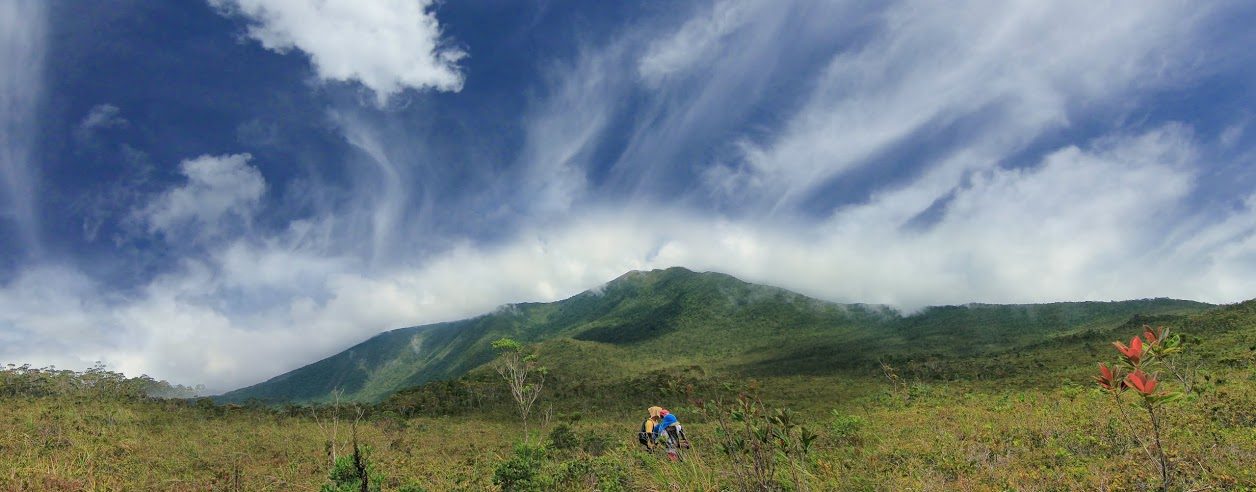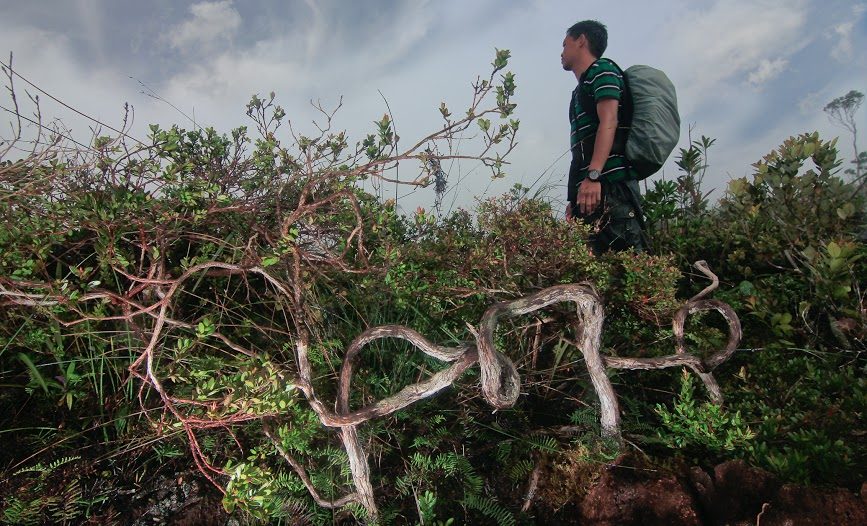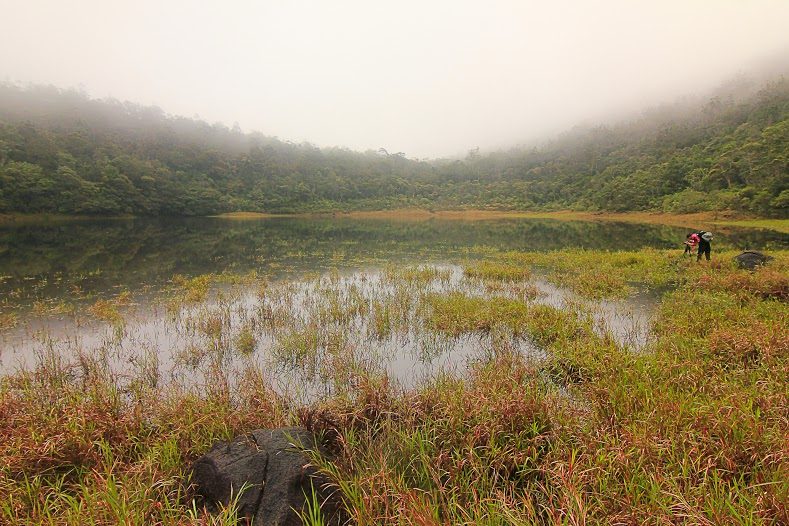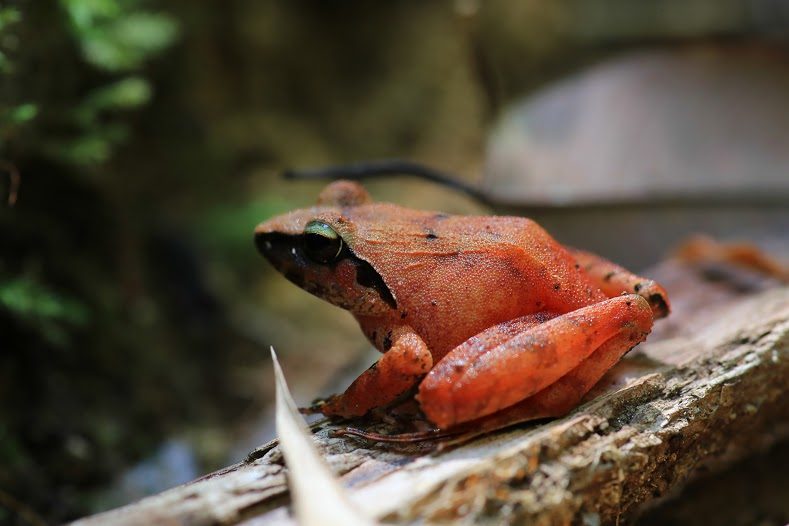SUMMARY
This is AI generated summarization, which may have errors. For context, always refer to the full article.

DAVAO ORIENTAL, Philippines – More than 6,000 hectares of nature’s wonder constitute the distinctiveness of Mount Hamiguitan, a prized gem of this picturesque province that has gained fame with its inscription in the highly-coveted UNESCO World Heritage Site in 2014 and lately, as an ASEAN Heritage Park.
Mt. Hamiguitan – shared by municipalities of San Isidro and Governor Generoso and the city of Mati – was inscribed in the list for its outstanding universal value, which celebrates “the most important and significant natural habitats for conservation of biological diversity, including those containing threatened species of outstanding universal value from the point of view of science or conservation,” according to the press release.
One of its attractions is the 225-hectare pygmy forest, a field of bonsai trees estimated to be century-old, perhaps the biggest of its kind in the planet.

Mt. Hamiguitan is also home to 1,380 plant and animal species, 341 of which are endemic to the Philippines like the Philippine cockatoo, golden crown flying foxes, the Philippine tarsiers, the Philippine warty pigs, Philippine mossy-pygmy fruit bats and the iconic Philippine Eagle.
These, among many other things, are nature-lovers and mountain climbers ready to explore this mountain that is towering in 5,315 feet above sea level.
But following the provincial government’s edict on the full conservation efforts of Mindanao’s first and only UNESCO World Heritage Site, it is still closed for any adventurous soul wanting to take a closer look at the beauty of this verdant mountain.
Only researchers issued with government permits and UNESCO assessors who periodically examine the mountain for biological indicators are allowed entry to Mt. Hamiguitan, mirroring the local government’s strict implementation of conservation efforts for Mt. Hamiguitan.
This leaves us with only a colorful verbal description of their experiences, and those of locals who are lucky enough to scale the mountain.
Allan Ipunat, a local of San Isidro town, is one of them. His animated sharing of his experience added mystery to Mt. Hamiguitan, particularly on his account of “Tinagong Dagat,” a lake found in Mt. Hamiguitan that experiences high tide and low tide.

Allan also recalled a portion of the mountain where trees grow in equal distance from each other, and one part of the forest that puzzled locals and researches on the absence of any falling leaf on the ground. There’s also the Twin Falls that add to the rich biodiversity sphere of Mt. Hamiguitan.

Allan’s colorful account of this mountain forms part of the local government’s efforts in creating awareness on the importance of this mountain.
This awareness campaign was brought to the foot of Mt. Hamiguitan no less. Those wanting to experience this place need not to worry anymore as the provincial government here built a beautiful museum fit for the grandness of the mountain.
Located in the town of San Isidro, the Mt. Hamiguitan Natural Science Museum is an interactive facility that not only showcases the wonders of Mt. Hamiguitan but also advocates for people’s participation in the mountain’s conservation efforts by introducing them its rich flora and fauna, and what it means for the humanity.

Reaching the museum from the highway is a breeze through concreted roads. The museum’s striking white painting is even more highlighted by the canopy of green trees that serve as its background.
Its simple facade belies the overload of information displayed inside, curated in such a way that it can catch the attention of young and old minds alike.

The museum is divided into different sections, with each part showing its visitors the details —big and small ones— that make up the wonders of Mt. Hamiguitan.



A guided tour immerses visitors in the deep jungle through larger-than-life presentations, complete with artifacts culled out from the mountain no less.

In a dark room, for example, the tour will give one a hint of what it feels like living in the dark with animals that are active at night.
Entrance fee to the museum is P50. The small complex also has a lodging facility for those who want to stay overnight. Tents can also be pitched here, with rented tents available for a very minimal fee.
Corporate gatherings (and even wedding receptions) can also be booked here since a large room in the second floor of the museum is especially designed for this. Income generated through this is used for the maintenance of the museum.
“We used to say Mt. Hamiguitan is owned by Davao Oriental. Lately, we realized we are not the sole owners of the mountain anymore. It’s already owned by the whole world and that reduced us to mere caretakers of Mt. Hamiguitan,” Allan said.
It might take a long time before the provincial government finally decides to open this nature’s wonder to interested climbers on the condition of responsible mountaineering. For the meantime, the opening of this museum is a welcome development for those who are curious to take a glimpse of the world thriving in Mt. Hamiguitan.
How to get there: Major airlines fly to Davao City on a daily basis. From Davao Ecoland Terminal, take the bus heading to the Municipality of Governor Generoso, some 173 kilometers away, which will usually take 3.5 hours at most.
Another option is to ride the bus heading to Tagum City and from here, ride a passenger jeepney heading to Governor Generoso or Sigaboy. Either of the two options, prepare P250 for your fare. Tell the driver to drop you at the junction leading to the museum, where you can ride a habal-habal motorcycle for 30 pesos. Entrance fee to the museum is P50. – Rappler.com
 Louie Lapat is a government employee in Tagum City, Davao del Norte where he writes for a local government on weekdays. On weekends, he explores his beloved Mindanao and write accounts about it on his travel blog: dsprinkles.com.
Louie Lapat is a government employee in Tagum City, Davao del Norte where he writes for a local government on weekdays. On weekends, he explores his beloved Mindanao and write accounts about it on his travel blog: dsprinkles.com.
Add a comment
How does this make you feel?
There are no comments yet. Add your comment to start the conversation.